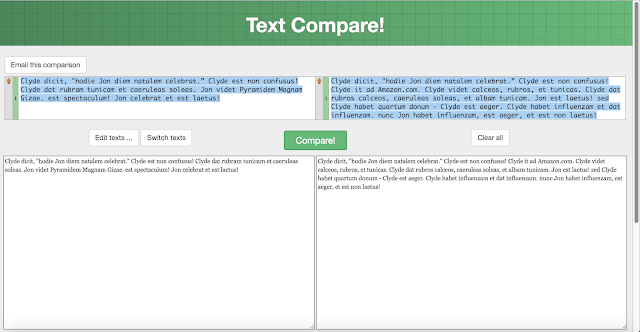I'm back after a month of rejuvenation and recentering. In mid-July, I attended the iFLT Conference (International Forum on Language Teaching), which was right where I live in Cincinnati, Ohio.
The highlights:
- iFLT offers something tremendous that is rare in the conference circuit - 'lab classes'. These are classrooms with real live students (not just teachers pretending to be students) being led by talented and experienced CI teachers. Each year offers something different in terms of levels of learner, instructors, and languages available. This year featured the first-ever Latin lab class, featuring the incomparable Justin Slocum Bailey and my own students! Seriously, each morning of the conference, attendees can watch master teachers in action, and it is priceless. I was fortunate enough to see not only the Latin class but also Annabelle Allen, "La Maestra Loca".
- Tracks & Coaching - iFLT offers attendees some options on customizing their conference experience. You can simply attend the conference and go to sessions based on your (& their) availability, or you can sign up for a particular track based on your novicity or expertise in teaching with Comprehensible Input. When you sign up for a track, you are placed into a cohort of like-ability teachers and assigned to a lead teacher as well as at least one coach. My coach was the excellent Gary DiBianca.
- Open Coaching - Coaching is available for anyone throughout the conference - they set up many of the coaches in a common area and you can work with them rather than attend a session. If you like, you can work with different coaches until you find your Mister Miyagi.
- Vibe - There is a relentless positive energy and encouragement!
- Twitter & Attendify - The conference has a vibrant Twitter and Instagram presence - offering a chance to connect from outside the conference and spread the love. The Attendify app provides a way for in-conference collaboration and communication.
- Latin teachers! I can claim to have been part of a good squad of Latin teachers. We ate lunch together, mingled with other languages, and in general rocked!
Things I learned or re-learned, in no particular order:
- A 'Map Talk' can be a nice switchup from a Picture Talk or Movie Talk.
- "Picasso of Plates" - This activity involves students holding a paper plate on their head and trying to draw something without being able to see. Can't wait to try it!
- It is so efficient and easy to follow a Movie Talk with any activity that can use screen captures.
- The Point and Pause is powerful - my cohort reminded me this again and again as I learned Spanish, Chinese, and Indonesian from their lessons!
- "If they laugh, they're listening."
- Sounds effects & choral activities can bring the room together.
- When dealing with a problem behavior, distract rather than reprimand. And keep it to a whisper! (Or break the flow with a brain break.)
- The Seven Voice Tricks to keep engagement:
- loud v. soft
- fast v. slow
- high v. low
- p - a - u - s - e
- Kahoot without technology!
- Use colored paper / shapes to represent the four possible answers. Have students hold them in the air to answer! Will they cheat? Yes! Will they learn? Yes! I have a feeling this will turn into a longer blog post with more variants once I've used it in my classes.
- Compelling visuals are not hard to find:
- optical illusions
- https://gratisography.com
That's all for now!








